Whether you are a carnivorous food enthusiast or someone who loves a great steak, the debate between Prime Rib vs Ribeye is a never-ending story. Both cuts are known for their rich flavor profile and tenderness but differ in several ways. Although originating from the same part of the beef, Prime Rib, and Ribeye are completely different cuts offering distinct culinary experiences. Some argue that Prime Rib has a more pronounced flavor due to its marbling and bone-in preparation, whereas others prefer the leaner and juicier texture of the Ribeye. In this article, we will explore the differences between these two beloved cuts of beef to help you make a more informed decision for your next steak dinner.
What is Prime Rib?
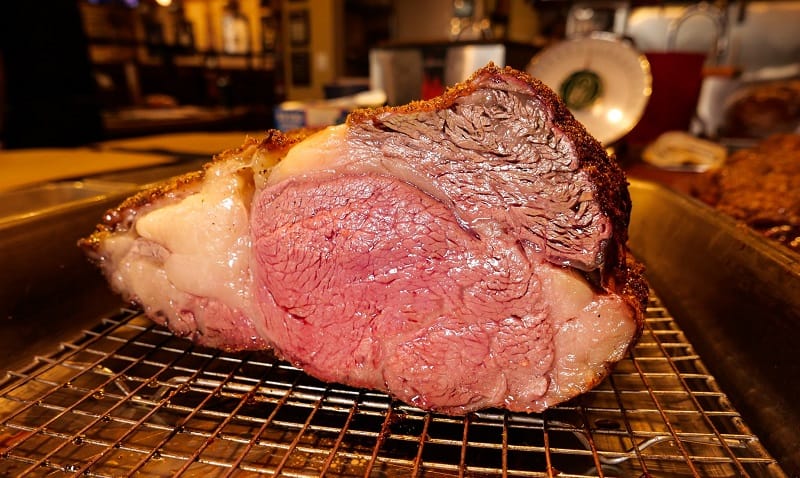
Prime rib, also known as standing rib roast, is cut from the sixth to the twelfth rib. This cut of beef has a rich, robust flavor that can’t be found in other cuts of beef. It’s also extremely tender, making it a favorite for steak connoisseurs everywhere.
When cooked, prime rib is usually served with the fat cap still attached. This helps to keep the prime rib juicy and flavorful. Prime rib can be cooked in various ways, but the most popular way is to slow-roast it in the oven. This method allows the prime rib to retain its flavor and juiciness.
Prime rib is usually served in large portions, so it’s often used for special occasions or family gatherings. Prime rib can also be bought pre-packaged in a grocery store, or you can have it cut fresh to order at a butcher shop.
What is Ribeye?
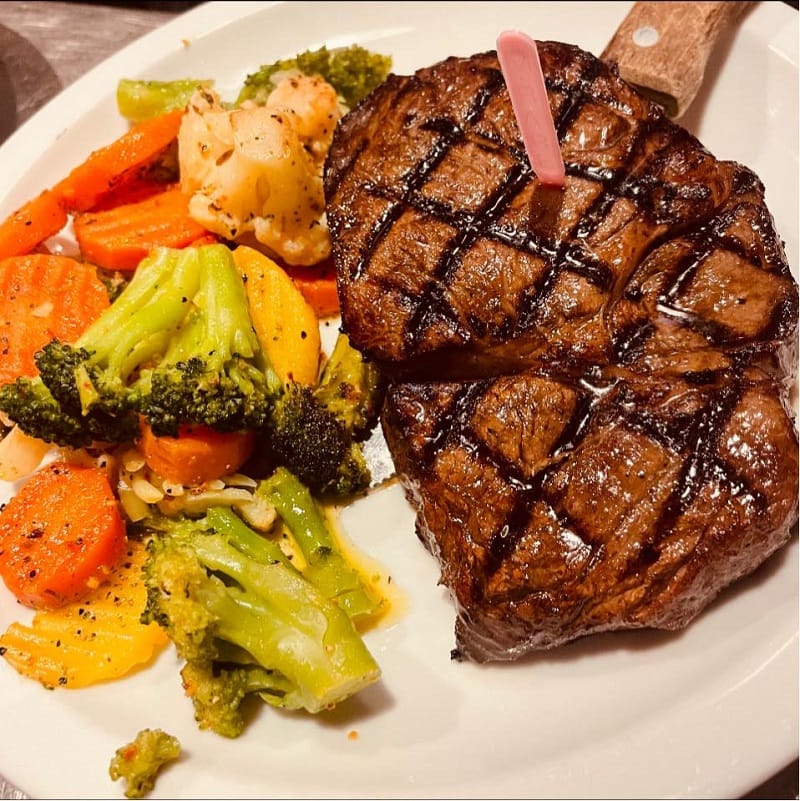
The ribeye is a cut of beef from the rib section of the animal (hence the name). It’s a relatively tender cut of steak that is well-marbled with fat and has a rich, beefy flavor. The ribeye is one of the most popular cuts of steak for grilling and is often served as a steak dinner.
The rib eye is a great choice for those looking for a steak packed with flavor and juicy tenderness. It’s a bit pricier than other cuts of steak, but the flavor and tenderness make it worth the investment. The ribeye can be cooked in a variety of ways – grilled, pan-seared, broiled, or even braised – and is sure to please any palate.
When choosing a ribeye steak, looking for one with a good amount of marbling is important. Marbling is the fat that runs through the steak’s muscle and gives it that delicious flavor and tenderness. The more marbling, the better. Also, look for a steak that’s a uniform thickness throughout. This will ensure that it cooks evenly and reaches the desired doneness.
Prime Rib and Ribeye: The Similarities
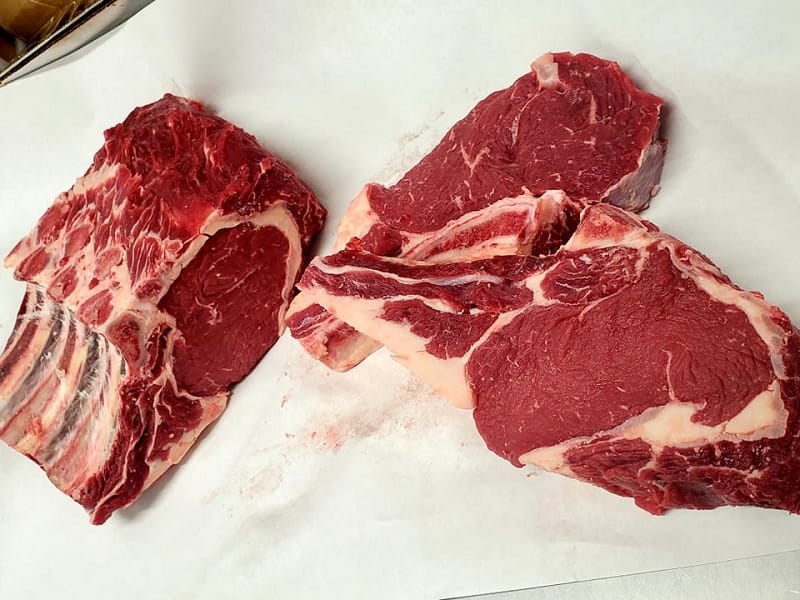
Both prime rib and ribeye are made from the same cut of beef, the rib section. They both have a great flavor, with a slightly different textures. They both contain a good amount of marbling, which gives them a juicy and tender texture. Both cuts of meat are incredibly versatile and can be prepared in a variety of ways.
In conclusion, while prime rib and ribeye may look a bit different, they share many similarities. Both cuts of meat are incredibly flavorful and can be prepared in a multitude of ways. So whether it’s a special occasion or a regular dinner night, you can’t go wrong with either prime rib or ribeye.
Prime Rib vs Ribeye: The Differences
First, they come from the same primal cut of beef but in different sub-primal amounts. A ribeye is a steak that can be either boneless or bone-in, while prime rib is a roast typically cooked bone-in. Because it’s a larger cut, prime rib is generally more expensive and takes longer than ribeye. The prime rib has more fat marbling throughout the meat, giving it a juicier flavor than ribeye.
Regarding cooking, ribeye is best cooked over high heat, while prime rib is typically cooked low and slow for several hours. Whether you prefer the hearty flavor of prime rib or the tender bite of a ribeye, both cuts of beef can be delicious if prepared properly.
Location
The primary difference between prime rib and ribeye is the cow’s location. The prime rib is cut from the rib primal, located between the cow’s chuck and the loin section. This area of the cow contains a lot of fat and connective tissue, which makes the meat succulent and flavorful. Ribeye, on the other hand, is cut from the primal ribeye, located in the cow’s rib section. This cut of beef is leaner and contains much less fat, making it less flavorful than prime rib.
Preparation
The way prime rib and ribeye are prepared can also differ. Prime rib is usually roasted or slow-cooked, which helps to tenderize the meat and bring out its flavor. Conversely, Ribeye is generally grilled or seared, which helps create a caramelized crust on the outside and a juicy, tender inside.
Is One Cut Of Beef More Tender Than The Other?
Regarding tenderness, the prime rib is usually more tender than the ribeye. This is due to the higher fat content in prime rib, which helps to keep the meat juicy and tender. Ribeye is usually leaner and not as tender as prime rib.
Flavors and Texture
The flavor and texture of prime rib and ribeye can also differ. Prime rib is usually more flavorful due to the higher fat content. It’s also usually more tender and juicy due to the fat marbling throughout the cut. Ribeye is generally leaner and less flavorful but still very tender and juicy.
Fat Content
Prime rib is cut from the primal rib and contains a lot of fat, while ribeye steak is cut from the rib, which is much leaner. This means that prime rib will provide many flavors but also higher calories. On the other hand, ribeye steak is an excellent choice if you are looking for a leaner cut of beef.
Calories
A 3-ounce serving of prime rib has about 260 calories, while a 3-ounce ribeye steak has only about 150 calories. Thus, ribeye steak is the better choice if you are watching your calorie intake.
Cost of Prime Roast vs Ribeye Steak
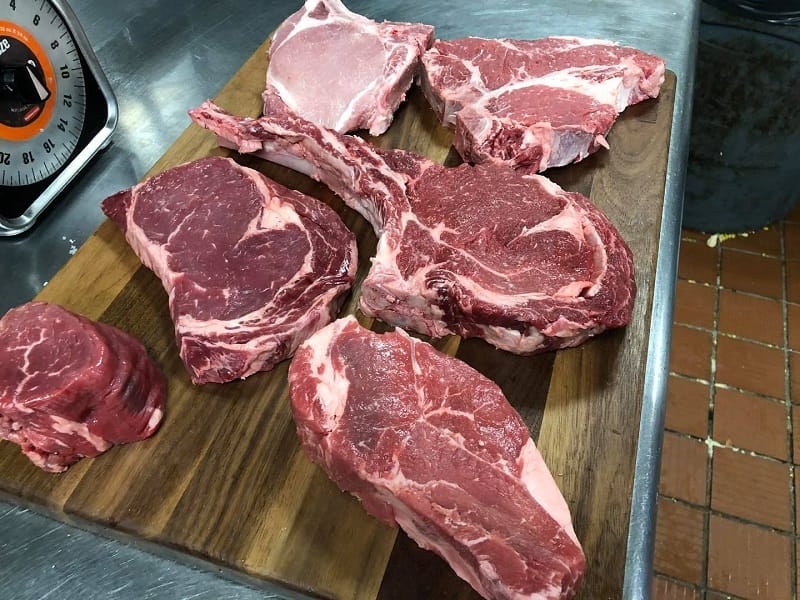
Generally, prime rib is more expensive than ribeye steak, but it also depends on where you purchase the beef. Normally, you can expect to pay more for prime rib from a butcher or specialty market, while ribeye steak is usually more affordable from a grocery store.
Cooking Time
Prime rib is usually cooked longer than ribeye steak due to its high-fat content. Generally, prime rib takes about 1 ½ hours to cook, while ribeye steak takes only about 30 minutes.
Cooking Method
The cooking method for prime rib is slow-roasting, while ribeye is best cooked over high heat. Slow-roasting prime rib makes the fat render and the meat very tender and juicy. Conversely, Ribeye should be cooked over high heat to achieve a crispy, caramelized crust, and a juicy interior.
Which Cut Is Easier To Cook – Prime Rib vs Ribeye?
When it comes to which cut of meat is easier to cook, the answer is prime rib. Prime rib requires less attention and can be cooked in a slow-roast cooking method, while ribeye requires a higher temperature and more attention to ensure it is cooked correctly.
Which Cut Of Meat Do Professional Chefs Prefer – Prime Rib Or Ribeye?
When it comes to which cut of professional meat chefs prefer, the answer is ribeye. Most chefs prefer ribeye because it can be cooked over high heat, allowing for a crispy, caramelized crust, and juicy interior. Prime rib is often cooked slower, resulting in tender and juicy meat but not as flavorful or texturally appealing as ribeye.
Which Is Better – Ribeye vs Prime Rib?
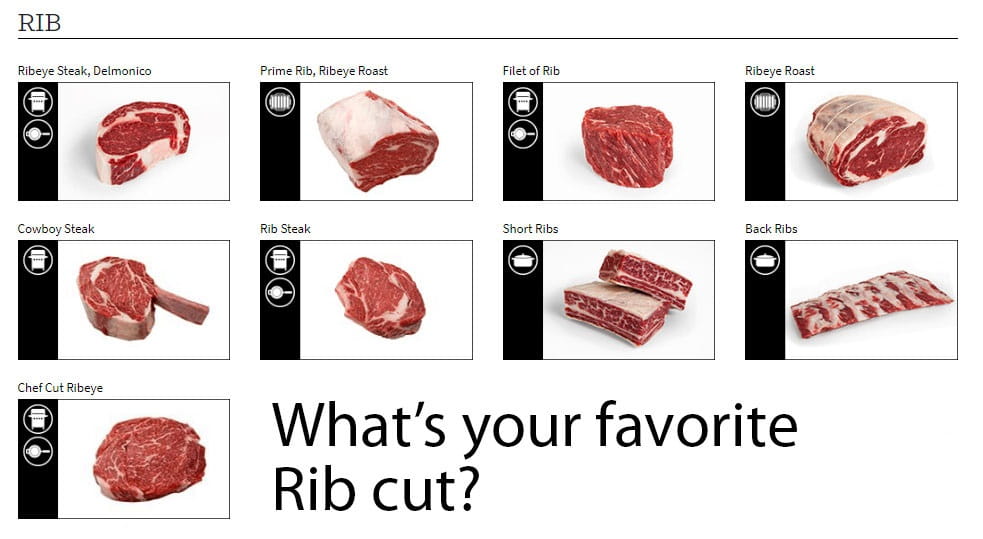
Ultimately, the answer to which cut of meat is better – ribeye or prime rib – depends on your preferences and the prepared dish. Prime rib is the way to go if you’re looking for a tender, juicy steak. But ribeye is the way to go if you’re looking for a steak with a crisp, caramelized crust and juicy interior. Both cuts of meat have their advantages and disadvantages, so it’s best to try both before making a final decision.
Read more:
What Is The Best Way To Season Prime Rib And Ribeye
Seasoning prime rib and ribeye is an art form. You want to season your steaks so that the flavor is robust yet not overpowering. You want to avoid any overly salty or spicy seasoning that might overwhelm the flavor of the steak.
The best way to season prime rib and ribeye is to use a simple combination of herbs and spices. Some classic combinations include garlic, rosemary, thyme, oregano, and paprika. You can also add salt, pepper, and other spices to taste.
When seasoning your steaks, it’s important to remember that the steaks will continue to cook after they are removed from the heat. So it’s essential to season the steaks before cooking them to ensure the flavor is fully absorbed.
When applying the seasoning to the steaks, rub it in evenly and thoroughly. For prime rib and ribeye, you can rub the seasoning into the fat and then work it into the flesh. This will help the seasoning to penetrate more deeply, imparting more flavor and keeping the steak juicy.
To bring out the flavor of the meat, you can also apply a dry rub to the steaks before cooking. A dry rub combines herbs and spices, such as garlic powder, onion powder, chili powder, and paprika, that you blend onto the steaks. Dry rubs help to create a flavorful crust on the steak and also help to lock in the juices.
How to Cook Prime Rib?
Cooking the perfect Prime Rib can be daunting, but with a few simple steps, you can turn out a tender, juicy, and flavorful roast every time.
First and foremost, it is important to let the roast come to room temperature before cooking. Please remove it from the refrigerator about an hour before cooking, and season it lightly with salt. Cover it lightly with plastic wrap to help keep it from drying out.
Next, you’ll want to prepare your herb rub. Combine the salt, pepper, fresh thyme, rosemary, garlic, and olive oil to create the perfect flavor combination. Rub this over the outside of the roast and place it in a cast iron, roasting, or oven-safe pan. For a bone-in roast, place it with the bones down. You’ll want to place a boneless roast on top of a rack before putting it in the pan.
Once the roast is in the pan, set your oven temperature to 300°F. Place your roast in the oven and cook it for 30 minutes per pound. Baste it with the pan juices every 30 minutes or so to help keep it moist. When it is done cooking, please remove it from the oven and let it rest for 15 minutes before slicing.
Once your prime rib has rested, it’s time to carve and serve. If your prime rib was bone-in, you must remove the bones before carving. Spoon some extra sauce from the pan over the roast, if desired, or use it to make gravy. You can now enjoy your perfectly cooked prime rib!
How to Cook Ribeye?
Ingredients you need to prepare:
- One 24-ounce bone-in ribeye steak, 2-inch-thick, at room temperature with kosher salt and freshly ground black pepper, to taste
- One tablespoon of canola oil
- Three tablespoons unsalted butter
- Three cloves garlic, smashed
- Three sprigs of fresh thyme
- Two sprigs of fresh rosemary
You’ll need a good quality ribeye steak, a medium cast iron skillet, canola oil, butter, garlic, thyme, and rosemary.
Using paper towels, pat both sides of the steak dry; season generously with 1 1/4 teaspoons salt and 1/2 teaspoon pepper.
Now, heat the skillet over medium-high heat until it is boiling, about 1-2 minutes; add canola oil. Place the steak in the middle of the skillet and cook, turning every 2-3 minutes, until a dark crust has formed on both sides, about 12-14 minutes.
Once the steak has a good crust, reduce the heat to medium-low. Push the steak to one side of the skillet; add butter, garlic, thyme, and rosemary to the opposite side, tilting the skillet towards the butter and cooking until butter is foaming, about 30 seconds to 1 minute. Working carefully, spoon the butter over the steak for 1-2 minutes, turning over once, until it reaches an internal temperature of 120 degrees F for medium-rare or until desired doneness.
Let the steak rest for 15 minutes before slicing. Finally, serve immediately and enjoy the delicious flavor of your ribeye steak!
What Are Some Popular Sides Dishes To Serve With Prime Rib And Ribeye?
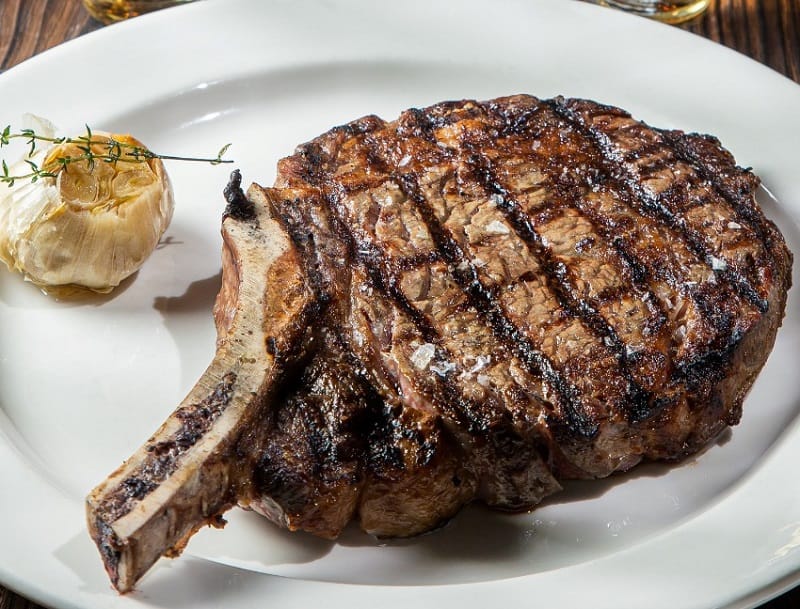
Plenty of side dishes pair well with prime rib and ribeye. Here are some of the most popular side dishes to serve with prime rib and ribeye:
- Roasted Potatoes: Roasted potatoes are a classic side dish that pairs perfectly with a juicy steak. For extra flavor, try roasting them with fresh herbs or garlic.
- Cauliflower Gratin: This creamy, cheesy dish will surely please everyone at the table. Paired with steak, it’s a perfect combination of richness and texture.
- Sauteed Greens: Sauteed greens are a great way to add a healthy boost to any meal. Try sauteing spinach, kale, or chard in olive oil with garlic and a pinch of salt.
- Mashed Potatoes: Mashed potatoes are a staple side dish that pairs well with nearly any type of steak. Try adding butter, cream, or herbs for added flavor.
- Grilled Vegetables: Grilled vegetables are a great way to add a bit of smokiness and flavor to any meal. Try grilling bell peppers, eggplant, or zucchini for a delicious addition to any steak dinner.
These are just a few popular side dishes that go well with prime rib and ribeye. No matter your choice, they will surely be a hit with your guests.
Are There Any Specific Wine Pairings That Complement Prime Rib Or Ribeye?
When selecting the perfect wine pairing for prime rib or ribeye, it’s important to consider the other ingredients in the dish. If you’re serving the beef with a sauce or seasoning, you’ll want to select a wine that can stand up to the flavor. If you’re serving the beef plain, you’ll want to pick a wine that can bring out the meat’s natural flavors.
Many people find that a full-bodied red wine works well for prime rib. Cabernet sauvignon, zinfandel, and malbec are all great choices. These big, bold wines can stand up to the richness of the prime rib and bring out the flavor.
For ribeye, you’ll want to select a bold but not overpowering wine. Merlot, shiraz, and pinot noir are all great options. These medium-bodied wines can complement the ribeye without overwhelming it.
When selecting the perfect wine for your prime rib or ribeye, consider the other ingredients in the dish and the level of seasoning or marinade used. You can create a delicious and memorable meal with the right combination of flavors and the right wine.
What Types Of Cooking Methods Work Best For Ribeye And Prime Rib?
Regarding ribeye and prime rib, the two most common cooking methods are grilling and roasting. Both of these methods have unique advantages and disadvantages, and it is essential to understand them to get the best result from your cut of meat.
Grilling is a great way to cook your ribeye or prime rib quickly. The grill’s intense heat will sear the meat’s exterior, locking in the juices and flavor. However, it is essential to keep an eye on the temperature of your grill, as it is easy to overcook the beef if the heat is too high.
Roasting is a slower but more reliable way to cook a ribeye or prime rib. This method provides more even cooking and allows the fat to render correctly. It is also great to infuse your beef with additional flavors, such as herbs and spices.
When it comes to ribeye and prime rib, both grilling and roasting are excellent methods for achieving tender and flavorful results. A combination of the two methods may also be used, with the roasting providing the even cooking and the grilling providing the searing and flavor.
No matter which method you choose, it is important to keep an eye on the temperature of your grill or oven. This will ensure that your ribeye or prime rib is cooked to perfection.
Tips For Buying A High-Quality Prime Rib Or Ribeye
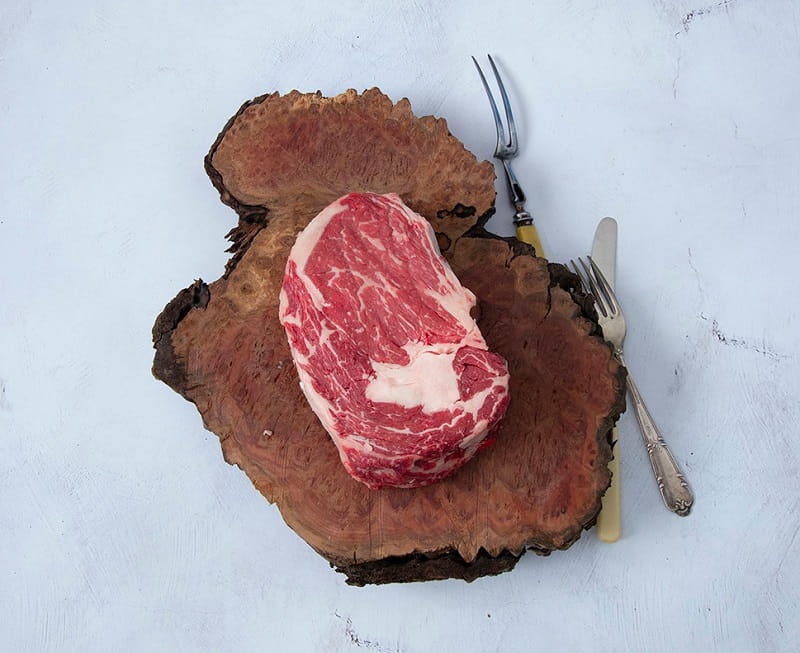
Before you head to the grocery store or butcher, you should keep a few things in mind when buying a high-quality prime rib or ribeye. Here are a few tips to help you select the best cut of steak.
- Look for Marbling: Marbling is the fat found within the steak’s muscle. It’s what gives the steak its flavor and tenderness. Look for steaks with a nice amount of marbling throughout the muscle, which indicates that the steak is high-quality. Avoid steaks with a large amount of fat on the outside, as this fat will not melt and add flavor to the steak.
- Check the Color: The color of the steak is another key indicator of quality. Look for steaks that have a bright red color with streaks of white fat. This indicates that the steak is fresh and high-quality. If the steak is gray or brown, it’s likely been sitting on the shelf for too long and isn’t as fresh anymore.
- Look for Labels: If you’re buying your steak from the butcher, ask for labels that indicate the steak’s grade. Prime-grade steaks will have a USDA Prime label, which is the highest grade of steak. Choice-grade steaks will have a USDA Choice label, which is still very high quality.
- Don’t Be Afraid to Ask Questions: If you’re buying steak from the butcher, don’t hesitate to ask questions. Ask the butcher where the steaks are from, how they’ve been aged, and how they were cut. The more information you have, the better prepared you’ll be to select the best steak for your meal.
How Do You Avoid Overcooking Prime Rib And Ribeye, And What Is The Ideal Temperature For Cooking These Cuts?
When it comes to prime rib and ribeye, the key is to cook them at a lower temperature for a longer period. This allows the fat and connective tissue to render and break down slowly, resulting in a tender and flavorful steak. The ideal temperature for cooking these cuts is between 135-145 degrees Fahrenheit, depending on how you prefer your steak.
It is important to note that prime rib and ribeye steaks should be cooked to an internal temperature of 135-145 degrees Fahrenheit. Cooking the steak to a higher temperature can result in an overcooked and dry steak. To avoid this, use an instant-read thermometer to monitor the steak’s internal temperature throughout the cooking process.
When cooking prime rib and ribeye, allowing the steaks to rest after they come off the heat is also important. This allows the steaks to continue to cook and the juices to redistribute throughout the steak. Allowing the steak to rest for 8-10 minutes will ensure that the steak is at its peak flavor and tenderness.
FAQs
Is It Necessary To Let The Meat Rest Before Serving?
When cooking meat, it is essential to remember that it should be allowed to rest before serving. Allowing the heart to rest ensures that the juices are redistributed evenly throughout the meat, making it more tender and juicy. Typically, thinner cuts of meat should be rested for a minimum of 5-7 minutes, while thicker cuts should rest for 10-20 minutes.
It is important to note that resting the meat also helps ensure that it is cooked completely. While cutting into the meat as soon as it is removed from the heat may be tempting, taking the time to let it rest will result in a more delicious and satisfying meal. Remember to wait until the center of the meat reaches 120°F (49°C), then let it rest undisturbed before slicing and serving.
Which Cut Is Best For Serving Large Groups Of People?
If you’re hosting a large group of people for a barbecue or dinner party, choosing the right cut of meat that can feed all your guests without breaking the bank is important. According to experts, bigger cuts of meat are the way to go, as they can be sliced and served to a crowd. Whole beef brisket is famous for mid-sized groups because it’s rich, flavorful, and can be sliced to serve a crowd.
For larger groups, a huge, whole tenderloin or a fat, juicy ribeye can be a sight to behold on the grill. Another cost-effective option is to buy a larger hunk of less expensive meat, such as brisket or chuck, and slow-cook it until it’s tender and delicious. The key is to ensure you have enough meat to feed everyone – a general rule of thumb is about eight oz. Per person, you expect at your party.
Can You Cook Prime Rib And Ribeye The Same Way?
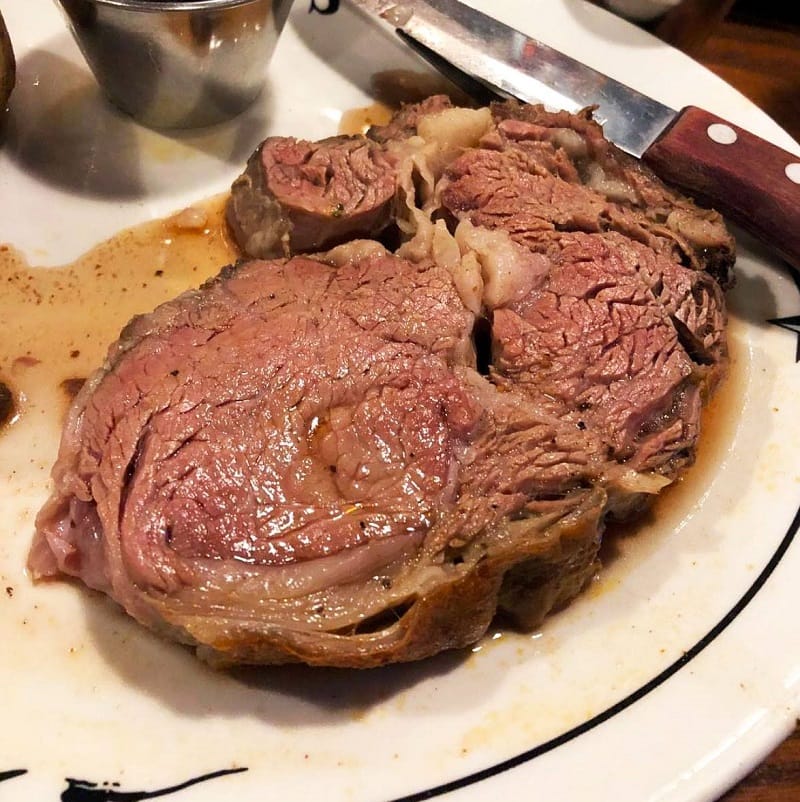
If you’re wondering whether prime rib and ribeye can be cooked the same way, the answer is no, they can’t be cooked the same way. Despite coming from the same primal beef cut, prime rib, and ribeye are very different cuts of meat. The prime rib is a roast seared and baked slowly to create a supple texture with juicy, marbled fat.
On the other hand, a ribeye steak is typically charred and cooked over high heat. The cooking methods for these two cuts of meat are unique and result in different textures and flavors. So, when it comes to prime rib and ribeye, it’s best to use cooking methods specific to each cut to get the best result.
Which Cut Is More Commonly Served In Restaurants?
When it comes to steak, several cuts are commonly served in restaurants. However, the Filet Mignon is often the most popular choice in many fine dining establishments. It is known for its tenderness, lack of marbling, and rich flavor. It also pairs well with various sides, making it versatile for many culinary experiences.
While there are certainly other cuts that are popular among steak lovers, the Filet Mignon remains a mainstay on menus worldwide. Whether served with a classic béarnaise sauce or grilled and seasoned perfection, this cut will surely be a crowd-pleaser among carnivores and foodies.
Prime Rib vs Ribeye – Final Thought
In conclusion, Prime Rib vs Ribeye is an ongoing debate that will continue to spark passionate and opinionated conversations. The two cuts of beef offer different flavor profiles, with the Prime Rib being far more tender and juicy than the Ribeye. The two cuts also differ in fat content and price, with the Prime Rib usually costing more. Ultimately, the choice is up to the individual and their preference. Both cuts are delicious, but if you are looking for something extra special, it’s hard to beat the succulent taste of a Prime Rib.
References:
- https://www.thekitchn.com/food-science-resting-meat-46678
- https://www.yahoo.com/lifestyle/host-the-ultimate-summer-barbecue-the-best-cuts-120721614176.html

Hey readers! Chip Holland here, and I’m a Manager of this website. My passion for writing about it only matches my passion for BBQ. Follow my blog for mouth-watering recipes, tips, and tricks for the perfect smoke, grill, and BBQ. I’m sure you won’t be disappointed!
